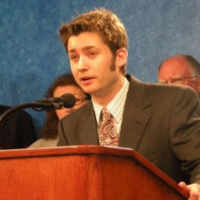You Can Disparage School Choice — As Long As You Ignore Facts, Thousands of Kids
A recent Huffington Post article took the Milwaukee Parental Choice Program (MPCP) to task for how some MPCP students with special needs are being treated in their schools.
First, to be clear, author Shayna Pitre cited an inaccurate number that voucher opponents have propped up for years when attacking the nation’s first modern school choice program; Pitre wrote that only 1.6 percent of students that received MPCP vouchers were labeled as having disabilities. Here’s why that figure is wrong: It represents only the number of students that were identified by their voucher schools as requiring additional accommodations for state testing that year.
Unfortunately, many parents not living in Milwaukee and Racine, who don’t have any other school choice options outside of a limited statewide program, are running out of educational options as a result.
That 1.6 percent figure is not a count of voucher students that have received Individualized Education Plans (IEPs). It is not a count of pupils that earned additional attention in the classroom during the school year. It is not even a count of students whose parents can attest to their academic struggles. It’s simply a measure of how many students the city’s voucher schools designated as needing access/assistance for testing opportunities.
In reality, the concentration of students with special needs in Wisconsin is significantly higher, and that applies to the MPCP as well. The School Choice Demonstration Project (SCDP) was a state-mandated longitudinal examination of student growth and performance in Milwaukee Public Schools (MPS) and the MPCP. In 2012, the final year of its work, the SCDP team answered the question of how many students with special needs use vouchers to attend private schools. Here’s what Dr. Patrick Wolf of the University of Arkansas, Dr. John Witte of the University of Wisconsin-Madison, and Dr. David Fleming of Furman University found:
- 14.6 percent of the MPCP students we observed in both the private and public school sectors from 2006 through 2010 were classified as participating in special education while in MPS;
- 7.5 percent of all MPCP students were classified as having disabilities when we used MPS administrator designations for students who spent any time in MPS and MPCP administrator designations for students who always remained in MPCP;
- 11.4 percent of MPCP students were described by their parents as having disabilities, based on responses to our parent surveys administered from 2007 through 2009.
SCDP Milwaukee Evaluation, Report #35, February 2012
Those numbers still trail the concentration of students with special needs in MPS classrooms (19 percent), but the lowest SCDP measure is still more than four times greater than Pitre’s estimate.
While the MPCP is being scrutinized by the U.S. Department of Justice, that investigation could soon be applied to the state as well. Wisconsin’s open enrollment program—which allows parents to send their children to public schools outside of their ZIP Code-assigned school—itself has received complaints from families of children with special needs. They claim their best efforts to find the right public school classroom for their children with disabilities are being thwarted by a process that allows districts to violate the ADA and turn those prospective students away.
Unfortunately, many parents not living in Milwaukee and Racine, who don’t have any other school choice options outside of a limited statewide program, are running out of educational options as a result.
Just because public schools turn away some children doesn’t make exclusionary practices right. It does, however, showcase the struggles that all schools—private and public—have when it comes to educating children that require significant resources to receive an effective education. Those struggles can be even more difficult when private schools’ per-student funding from tuition is less than half of what a traditional Milwaukee public school receives, as the case was in 2012 when the final round of SCDP studies were released. Is it any wonder some voucher-accepting private schools cannot afford to offer the specialized services many children with disabilities require?
School choice is about the power to leave any school, including a private one, that doesn’t serve a family’s needs to find one, public or private, that does. Indeed, a mother utilizing Oklahoma’s Lindsey Nicole Henry Scholarships (vouchers) elected to first remove her child from a public school in favor of a private school. But she found that private school also couldn’t provide the assistance her child needed. So she left—and chose another private school!
That mobility is key. And it’s occurring elsewhere. Here are the stories of just three of many students with disabilities using vouchers, from the Friedman Foundation’s “ABCs of School Choice.”
Keo was adopted at a young age, and his parents realized he had unique needs. Keo has been diagnosed with the behavioral disorder called Reactive Attachment Disorder, which manifests in such behaviors as withdrawing from others, acting aggressively toward peers, and failing to ask for support or assistance. He continued to struggle in his zoned public school despite the school’s awareness of his special needs. His parents found New Hope Academy, which specializes in behavior challenges, and the school accepted Keo with open arms. With the help of a school voucher, his parents were able to afford tuition. “He is doing much better but has a very long way to go. We need this money to keep him at this school until he is able to transition back to a regular school…. We have been so blessed to find this school and then to qualify for this scholarship,” Keo’s mother Kim said.
Shawn from Ohio
Shawn suffered multiple medical complications at birth, including Cerebral palsy. For years he attended his zoned public school, where he was told he would never learn what the “normal” kids learn. His peers also bullied him because of his disabilities, but the school was unsuccessful in resolving the bullying. His mother was determined that Shawn could learn and deserved a learning environment that welcomes and supports him. She found the Creative Learning Workshop (CLW), a school with a specialized program for children with disabilities, and Shawn was accepted. Shawn’s father is a truck driver, and combined, his family could not afford CLW’s tuition. A school voucher made it possible. Now, Shawn is thriving; he loves going to school. Hear his story in his own words here.
Dillon in Oklahoma
Dillon was diagnosed with Asperger’s Syndrome when he was seven. His mother, a single mom, was able to afford a private kindergarten, but was unable to afford private elementary school. She enrolled Dillon in their zoned public school, where he was treated differently. The bullying he experienced was so severe, he would come home from school and tell his mother that he wanted “to go to heaven because everyone hated him at school.” At eight-years old, he was hospitalized for three months at an institution to prevent him from harming himself. Finally with the help of a school voucher, his mother was able to enroll him in Trinity Episcopal School, which had a specialized program to suit his needs and a student culture of acceptance. Now, Dillon has friends and he looks forward to going to school. He tells his own story in a video alongside many other students with disabilities here.
Properly educating children with special needs should be a major concern in Wisconsin and across the country. But labeling the state’s first voucher program as a failure because of an arbitrary statistic ignores a significant portion of Milwaukee students that are finding the classrooms that serve their special needs best. That power should ultimately remain in the hands of parents, who need all the options that they can find to make the right decision for their children.




